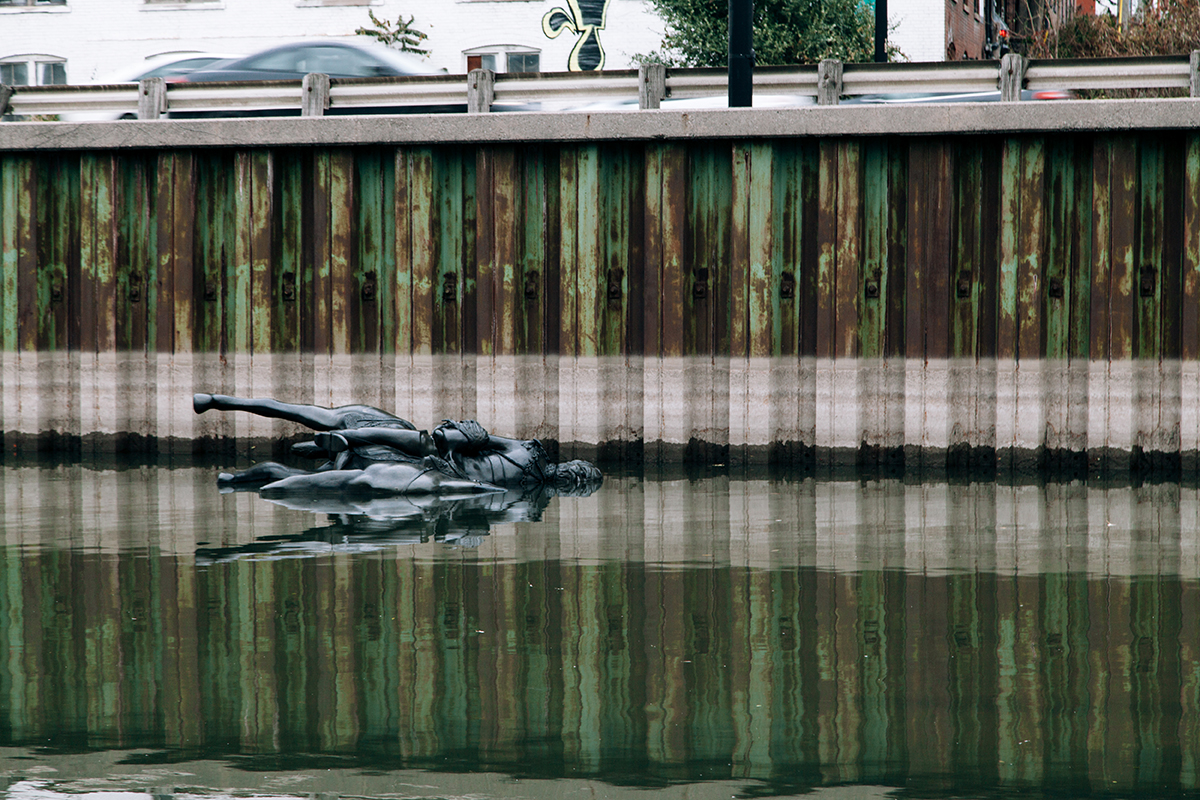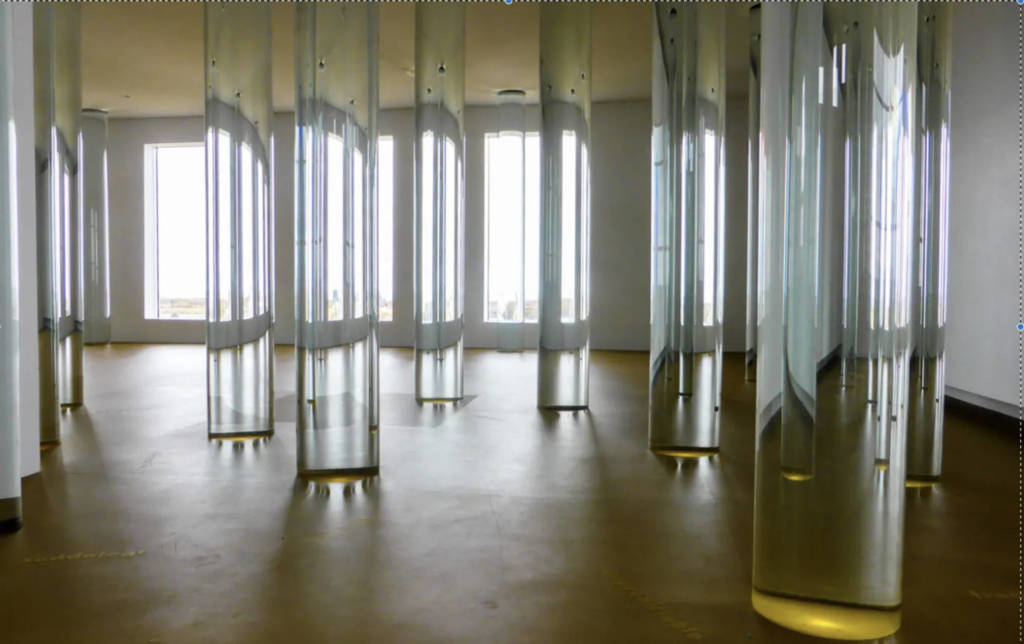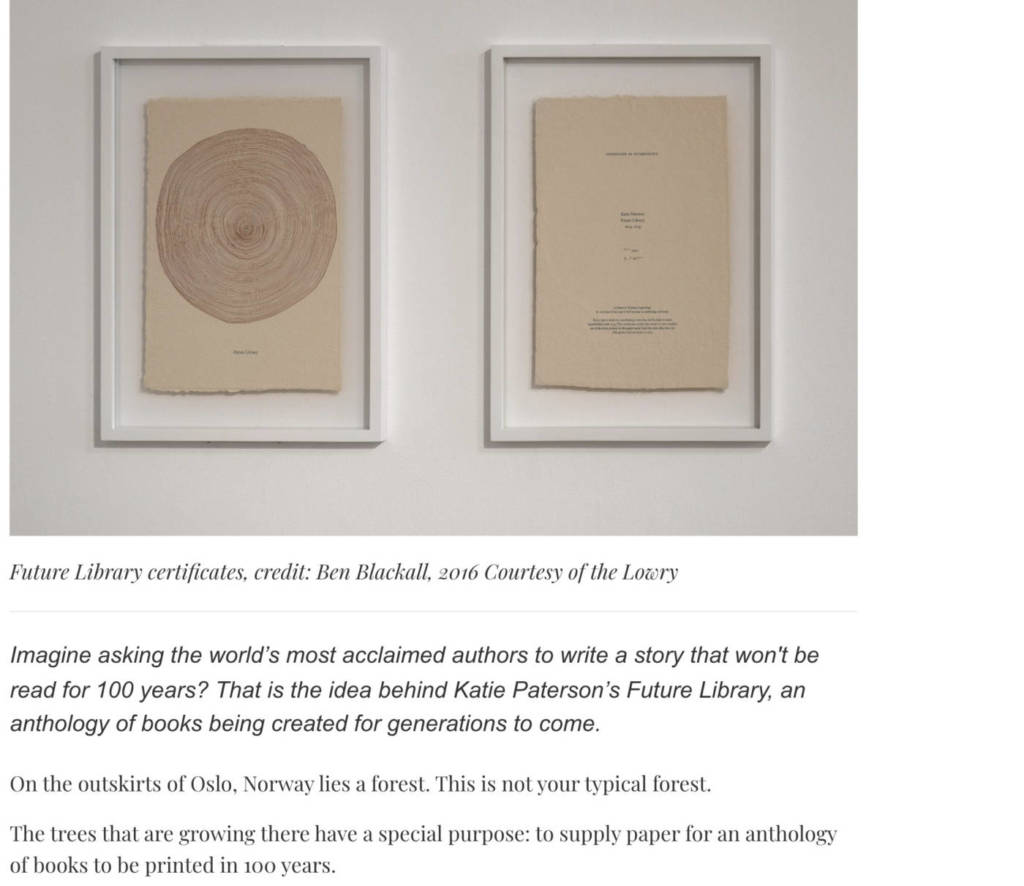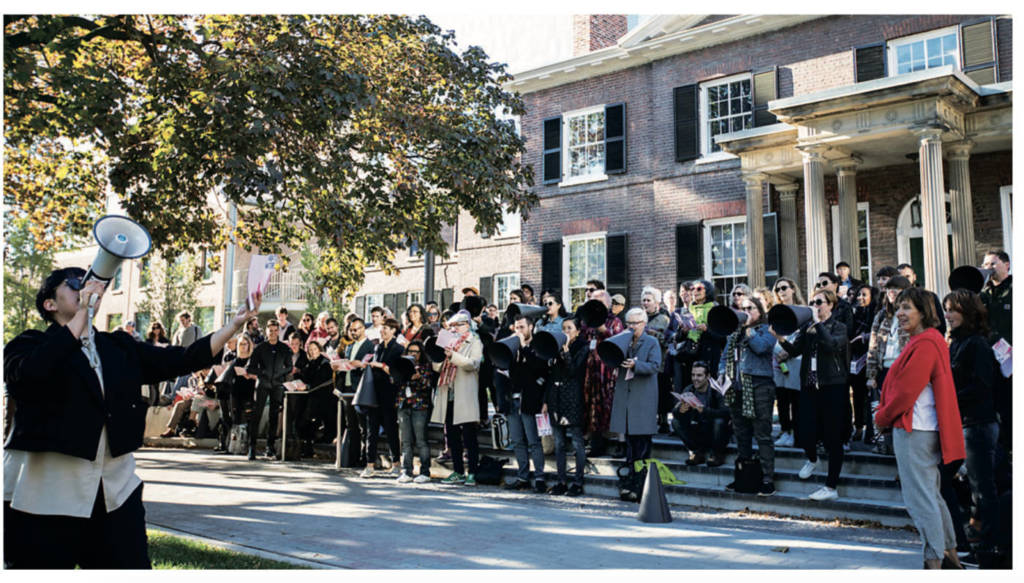Entry 1:
Some notes, following a train of thought on Teju Cole’s book Golden Apple of the Sun and Alice Zoo’s essay about it:
When I initially saw Teju Cole’s photographs, they made me think of grief. Everything feels foreign. This un-staged photography mimics dissociation. They are sad images to me. The framing devices (or lack thereof) recontextualize these mundane objects in the same way that some drastic change in one’s life can spur fresh eyes and a new appreciation for daily rituals.
Maybe Cole’s images seem sad because of the previous contexts where I have seen a dirty spoon—someone has just died while making soup or received bad news that has compelled them to leave the kitchen messy or is focusing on the now impossible task of cleaning in light of some tragic event or bout of mental illness. The visual language of a happy kitchen is one of order, bathed in warm light, pots cleaned or happily bubbling. Cole’s photographs participate in an institutionally unfamiliar visual lexicon.
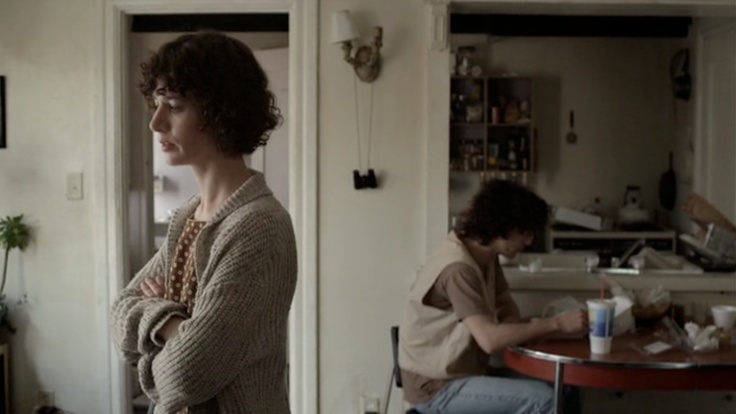



Cole’s writing alongside the images is important to their interpretation—a narrative forms in the webs of association. His history with food is documented at length in the back of the book of photographs. The images are contextualized through writing and I think this makes the work a lot more compelling. Or at least, easier to take seriously. But importantly, the photographs were first released online into the ever-expanding online ecosystem, the wilderness of images.
I am rambling but I think that I have landed on my point of departure (to mix metaphors).
Alice Zoo finishes this essay and interview by asking “What happens to the photograph when it is freed from the imperative to be good…” Interestingly, at the time of this essay, “casual Instagram” was trending—it, as a trend, had been percolating for a couple years on “aesthetic” and “cool-girl” accounts but it finally reached a point in the mainstream vernacular that it was identified in trend reports on TikTok.
What is casual Instagram? Casual Instagram is effectively what Cole is doing in Golden Apple of the Sun but with poorer image quality: photographs that depict nothing particularly exciting but somehow are aesthetically cool or beautiful typified this moment in online life. These photographs were meant to impart an effortlessness in lifestyle—that your everyday was aesthetic. Your phone could practically fall out of your hand and take a photo of your surroundings and its little lens would land on something charming, because your life was/is charming. Casual Instagram was also (initially) a reaction to the highly staged, highly curated, high production value of the influencer’s Instagram. I think this latter impulse is the driver of Cole’s work. His impulse to remove layers of performativity and production from his online world is an impulse that millions of other people had at the same time and before him. They were reacting to their own online ecosystems.
All of this is to say in some oblique way, that Cole’s images are narrative images. We exist in an image rich culture where every image that exists contributes to the network of images that existed before. Lineages of influence evolve and emerge. Pull the string and something will come from the depths of Instagram or advertising or art history. Cole’s images make me think of bridal catalogues and Canadian Tire flyers and vanitas paintings, and 2000s mumble-core films about loss. I can’t tell if Cole’s images participate in these traditions actively. Maybe Cole’s images are more of a Rorschach test for me than anything else.
Entry 2:
A disclaimer, this journal is a wild meandering document of half understood facts.
Optimism/Sentimentality/Sincerity
One of the threads that runs through many of the readings is the topic of mushrooms.
Another one of these threads is optimism/sentimentality/sincerity as an alternative approach to knowledge and research and general world outlook. I talked about this idea briefly in class the other day in relation to adrienne maree brown’s interview on On Being but this is a theme that appears in many of the other readings.
o/s/s was touched on first in our September 22nd reading, World on Fire: How Should Art Reckon With Climate Change?In fact, the editorial finished on a very o/s/s note, citing hope as the foundational concept of Nick Cage’s Organ2/ASLPwork. How very quaint!
We move on to our September 28th readings and o/s/s ideas are invoked. Robin Wall Kimmerer asserts that her initial interest in the natural world were rooted in questions of beauty. Her work has gone on to involve an emotional connection with the landscape. She asks her students cringey questions like “does the world/does nature care about you”, very o/s/s if you ask me.
In this same week we listen to an interview with Patricia Kashian who discusses their work in mycology. They mention o/s/s as these concepts relate to empirical scientific study. Scientific study is largely understood to be objective but how can it be?
Now we are in October and our materials for the 19th both discussed resisting capitalism and “hustle culture” through investing time in pleasurable activities.
Jenny O’Dell discusses labour movements and their slogan “8 hours for work, 8 hours for sleep, and 8 hours for what we will”. This “what we will” is later elaborated: enjoying the sun, walking through flowers, paddling a boat on a lake, writing poetry, long walks on the beach (I don’t think that last one was a real example of the “what we will category” but it may as well be). These activities are incredibly o/s/s.
adrienne maree brown’s work is rooted in o/s/s. Even when, in the podcast interview on On Being, she discusses the end of humanity it is in a way that manages to avoid cynicism. Her book Pleasure Activism navigates the world through beauty and joy and pleasure.
The Scientific Method Can Go (don’t let the door hit you on the way out)
I’m not a scientist. However, during my undergrad, I took a class called the “History of Philosophy and Science” and it was a review of all the ways in which science took its cues from philosophy. Science is rooted in empirical data and objective perspectives—this is thanks to Francis Bacon. But how can this be possible? We are an emotional species, prone to feelings of love and fear and joy and anger, how can one’s research be truly objective?
The scientific method is deeply rooted in attributes that we would associate with masculinity. “Men” are rational. “Women” are irrational. “Men” are level-headed. “Women” are hysterical.
I know that hysterical has all these really serious and oppressive connotations, historically. But I am a hysterical woman! I am a shrill, hysterical, silly, stupid woman and you should all treat me with respect.
Anyway, the scientific method is coded masculine and the scientific method has deeply influenced artistic practice. We, as artists have to create research proposals and write theses and gather data. It’s absurd.
I am advocating for an INTUITIVE artistic method. One that is grounded in emotionality, intuition, sentimentality, beauty.
Fear and Cynicism as Paralytic
I talk a lot with my boyfriend, Paul, about climate activism. What is the best way to motivate people to make climate conscious choices in how they vote, how they spend their money, how they dispose of waste etc… We both wonder if fear of annihilation is motivating anyone anymore. The times where I have felt the least motivated to do anything are times when I have felt the least hope.
I think living with an optimistic outlook, one where I have faith that my hypothetical children will have food to eat, and seasons to enjoy, is a future that I want to work toward and feel is achievable. Optimism and hope for a good future is practical. I won’t work for something I don’t believe in.
Irony
I just finished an essay by David Foster Wallace on irony, E Unibus Pluram: Television and U.S. Fiction. Though this essay is from the 90s, its concepts relating to irony in media and literature and art are completely relevant. I’ll try to reduce it to its main argument: much like when photography was introduced to the world and art responded with abstraction, we saw literature respond to television with meta-fiction. But meta-fiction has not been able to grapple with irony effectively (or at least in DFW’s opinion). I won’t go into the minutiae of literature’s attempts to grapple with irony, but what is important to understand is the pervasive trend towards irony in culture. DFW concludes this essay speculating
“The next real literary ‘rebels’ in this country might well emerge as some weird ‘anti-rebels,’ born oglers who dare to back away from ironic watching, who have the childish gall to actually endorse single-entendre values. Who treat old untrendy human troubles and emotions in U.S. life with reverence and conviction. Who eschew self-consciousness and fatigue. These anti-rebels would be outdated, of course, before they even started. Too sincere. Clearly repressed. Backward, quaint, naïve, anachronistic…Accusations of sentimentality, melodrama.”
Irony as hyper-object.
I don’t want to elaborate on this.
A Conclusion so to speak
I have grown up STEEPED in irony. I knew “say hello to my little friend” before I knew where that came from. Adolescent media and internet culture in the 2000s and early 10s was a wealth of media references and ironic, tongue in cheek moments. No wonder we all needed braces.
I want optimism, sentimentality, sincerity. I want to be vulnerable enough to feel real embarrassment because isn’t life embarrassing already and can’t we just admit that we all feel embarrassed all the time?
I had an ex-boyfriend who was a punk and he was exhausting. Too cool for this, too apathetic for that. Hated Christmas. Didn’t want to wear costumes at Halloween. I used to be like him but life wasn’t very fun being apathetic and listening to music no one has heard.
I’m going back to my studio now where I will be listening to the new Taylor Swift album.
Entry 3:
Shit Happens:
Adorno says that there must be pleasure in art because otherwise, why do we continue to pursue it? Why continue engaging in something unless we find it pleasurable on some level. Not everyone likes art, just like not everyone likes sex (as crazy as both ideas might seem). So when Amy says that she wanted to barf when at conferences on beauty and visual pleasure I am confronted with this thought from my friend, Adorno.
If Amy is not seeking visual pleasure in art, she is nonetheless enjoying art. I enjoy many things that are not beautiful but they are pleasurable. I guess what I am trying to say here is that Amy’s conflation of beauty and visual pleasure doesn’t really resonate with me. Although I can appreciate that one of the big questions of the 90s was BEAUTY as outlined by my hero and sadly deceased art crush, Dave Hickey in his essay “Enter the Dragon, On the Vernacular of Beauty”. And so in this aforementioned conference on beauty and visual pleasure, the visual pleasure in question was one linked to beauty. I am writing in circles over here.
Beauty to me does not equal visual pleasure.
To see a litre of yogurt on the ground is immensely pleasurable to me because it is so obscene.
ANYWAY
Now that I have awkwardly outlined that beauty and visual pleasure can be linked but **to me** are not, I can discuss the pleasure of awkwardness, the pleasure of discomfort, the pleasure of work. In “Shit Happens” Sillman seems to be grappling with naming the nameless, asking herself, if I am not in pursuit of beauty, of what am I in pursuit? She concludes with awkwardness, embarrassment, just being alive and that painting and art making can encapsulate these experiences.
What’s more awkward than a piece of Stephen Sondheim music??
I’m here to say that being alive: pissing, shitting, barfing, heartbreak, tripping on your shoelace in front of your crush, spitting on your new mother in law at your wedding because you got too drunk and your retainer makes you lisp…all these experiences can be pleasurable in some perverse way. There is pleasure in discomfort, and awkwardness, and I think that Sillman’s paintings hint at that and I think her writing outlines this, although maybe her definition of pleasure is different from mine.
Some work I find pleasurable in an awkward way (and unfortunately I did not take note of any work titles!):
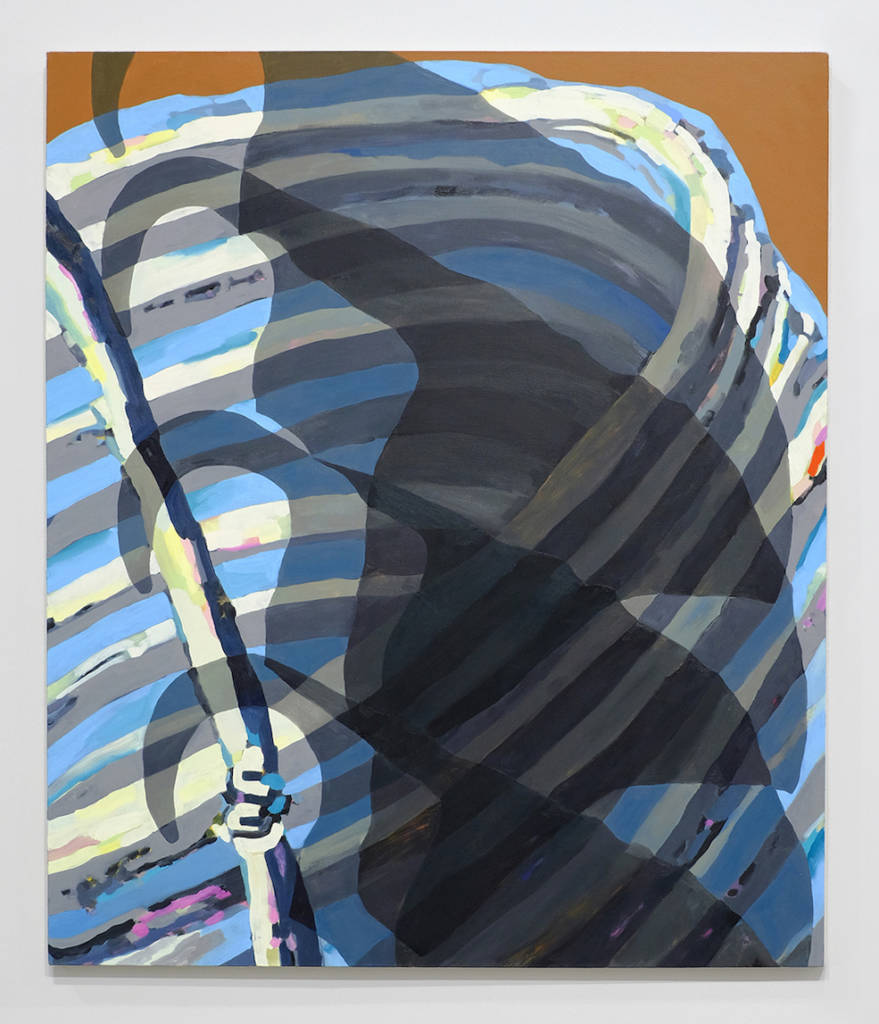





I’ve just realized that all these paintings are by artists whom I often think about! It’s never occurred to me to describe these paintings as awkward but they totally are and clearly it’s something that I seek out!
I wonder if the pleasure of these images is in their tension, in their awkwardness, in their clumsy and sometimes tasteless content and form and this tension is what I find pleasurable. Or maybe (and I think I may be on to something here) the tension is where the humour is.
The humour is embedded in the heavy handedness, the uncomfortable subject matter, the garish colour. The shaking line trembles with a belly laugh and a dirty joke we won’t ever say out loud. Freud’s humour is the humour that I am here referring to: the sublimation of your hidden feelings into cringey jokes. Does Freud’s humour live in awkward paintings?
Entry 4:
Bluets:
I am, perhaps simplistically, going to order my thoughts using numbers. I think it is a delightful writing convention and one that I enjoy every time I encounter it. Not to mention that I always think of tweets when I read this kind of writing, and how appropriate for Bluets. A series of thoughts from a little blue bird:
1. I was reading a review of Bluets by Jocelyn Parr in Brick literary journal, trying to make sense of this filmy and meandering piece of writing when I came across this passage in discussion of the Nelson’s autobiographical style:
“What separates Nelson’s work from … Kraus, Myles, Acker, Zambreno, and Heti is that every sentence is beautiful. Rather than attach herself to an aesthetic of ugliness in an effort to refuse the confines of what Zambreno would call the patriarchal literary establishment, Nelson transcends them: each proposition is breathtaking.”
2. I think this is an interesting concept. I have read this idea before, from Adorno, when talking about aesthetics. I am probably misquoting but Adorno states that the viewer’s affect in response to the work does not need to be negative for the work to be critical. The work can be beautiful and be critical simultaneously.
1.2 First of all, this review from Parr is incorrect. With all of Nelson’s discussions of sucking and fucking and assholes and pussies (oh my!) I would argue that she is absolutely engaging in ugly prose. Some of her writing about sex is extremely crass and not beautiful at all. Maybe my definition of beauty is too literal and this is not to say that I didn’t appreciate this dick pussy talk. Nor to say that sex that is crass and blunt and rude is something we should shy away from. Nor even is it to say that I don’t appreciate this kind of language in writing. But beautiful prose it is not.
1.3 Second of all, this concept that beauty is associated with the literary, patriarchal establishment is absurd. It’s like old school feminists saying that I can’t dress like a whore because it appeals to men. This positions me, and all women, in opposition to or subservient to “Men”. Men don’t own dressing like a whore and men don’t own beauty. I’m being simplistic here but let’s just agree and move along.
1.3 Now for my real point. I am so interested in this idea of beauty and its associations with flakiness and unintellectuality. In my undergrad one of my art history professors said “it’s too bad really, that Monet’s water lilies are so beautiful, because these paintings are very serious and they explore optics”. Wut???? So because these paintings are beautiful, they can’t be serious or scientific? Surely these qualities are not mutually exclusive?
3. I am lying on my stomach on my bed with my feet in the air, absently rubbing up against one another. I feel like a teenager in a movie.
4. I love Nelson’s use of “you”. It is the most painful, the most romantic, the most vulnerable. A “you” that is addressed publicly puts lead in my stomach. It make me nauseous with heartache. Who is this you? Are they reading this? Who is my “you”?
5. The letter that is public, and private all at once. The privacy of the “you”. It is hot and wet in its freshness, its proximity to domestic tragedy. It is melodrama.
6. This is my favourite poem maybe of all time, by Adrian Henri:
Well I woke up this mornin’ it was Christmas Day
And the birds were singing the night away
I saw my stocking lying on the chair
Looked right to the bottom but you weren’t there
there was
apples
oranges
chocolates
. .. . aftershave
but no you.
So I went downstairs and the dinner was fine
There was pudding and turkey and lots of wine
And I pulled those crackers with a laughing face
Till I saw there was no one in your place
there was
mincepies
brandy
nuts and raisins
. . . mashed potato
but no you.
Now it’s New Year and it’s Auld Lang Syne
And it’s 12 o’clock and I’m feeling fine
Should Auld Acquaintance be Forgot?
I don’t know girl, but it hurts a lot
there was
whisky
vodka
dry Martini (stirred but not shaken)
…. and 12 New Year resolutions
all of them about you.
7. I am gutted, I love this poem.
8. Or perhaps more famously is Frank O’Hara’s “you”, the “you” of
Sharing a Coke with you
is even more fun than going to San Sebastian, Irún, Hendaye, Biarritz, Bayonne
or being sick to my stomach on the Travesera de Gracia in Barcelona
partly because in your orange shirt you look like a better happier St. Sebastian
partly because of my love for you, partly because of your love for yoghurt
partly because of the fluorescent orange tulips around the birches
partly because of the secrecy our smiles take on before people and statuary
it is hard to believe when I’m with you that there can be anything as still
as solemn as unpleasantly definitive as statuary when right in front of it
in the warm New York 4 o’clock light we are drifting back and forth
between each other like a tree breathing through its spectacles
and the portrait show seems to have no faces in it at all, just paint
you suddenly wonder why in the world anyone ever did them
I look
at you and I would rather look at you than all the portraits in the world
except possibly for the Polish Rider occasionally and anyway it’s in the Frick
which thank heavens you haven’t gone to yet so we can go together for the first time
and the fact that you move so beautifully more or less takes care of Futurism
just as at home I never think of the Nude Descending a Staircase or
at a rehearsal a single drawing of Leonardo or Michelangelo that used to wow me
and what good does all the research of the Impressionists do them
when they never got the right person to stand near the tree when the sun sank
or for that matter Marino Marini when he didn’t pick the rider as carefully
as the horse
it seems they were all cheated of some marvelous experience
which is not going to go wasted on me which is why I’m telling you about it
8. Did you know there is no mention of the colour blue in ancient texts? Humanity doesn’t develop names for colours if their equivalent pigment hasn’t been produced–which makes sense. It is only when the colour becomes divorced from its referent that a new word is necessary, otherwise you could just describe things as like other things, such as this famous example from Homer “the wine drunk sea”. And blue is almost always the last pigment to be developed.
9. More interestingly though, is that seemingly, people are unable to distinguish colours among similar colours when there is no available name for that colour. Green is indistinguishable from blue if there is no name for blue, for example.
https://www.radiolab.org/episodes/211119-colors
10. Leading me to language. Can language really shift perception so dramatically? So that we see something that someone else might not see at all? I think so.
11. I love the blues in Alice Neel and in Felix Valloton and in Mary Cassat and Kerry James Marshall
12. Alice Neel’s blue outlines are especially yummy
13. I don’t any type of conclusion for this reading just that I think that it is wonder that autotheory can include love and loss and obsession and still be significant and considered significant work. I’m reading I Love Dick now and it is obsessive and funny and just absolutely crazy. Now I’m about to go on a tangent but I just have to say this publicly: I loved Eat Pray Love (the book not the movie). It isn’t quite autotheory but it’s very close and I think Elizabeth Gilbert is a wonderful writer and she discusses heartbreak really beautifully.
14. Ok that’s all for now. Diane, if you have read this far, you are a saint. Thank you for a wonderful class.
OH and lastly, my Chromophobia power point:


